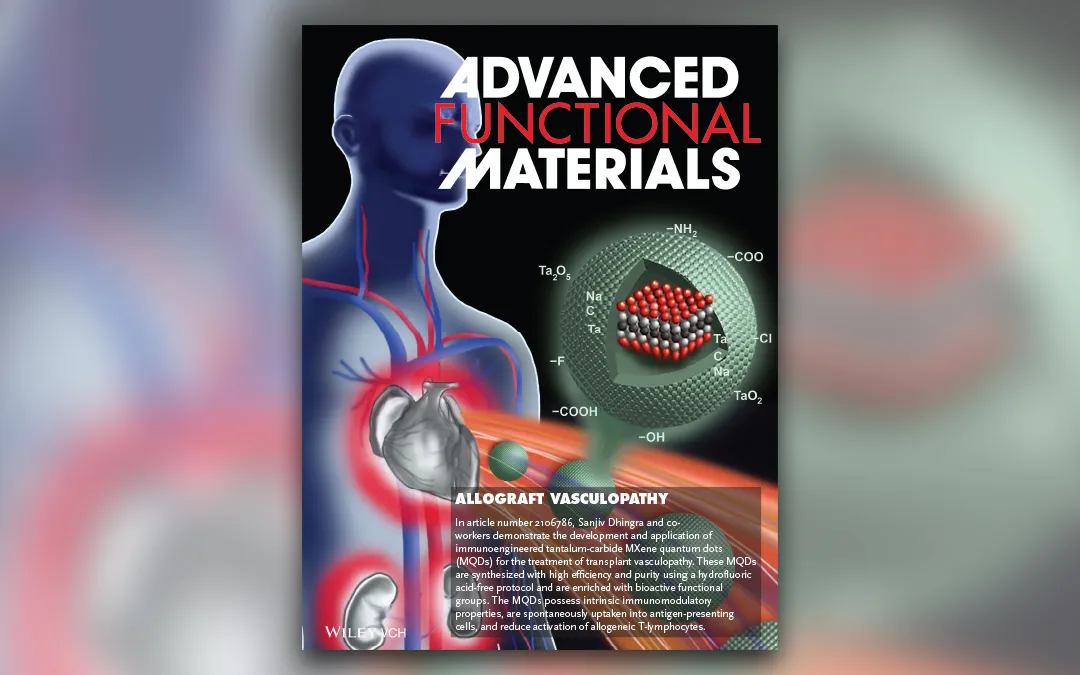
UM researcher publishes back-to-back in prestigious journal, files three patents for innovative material
Dr. Sanjiv Dhingra, associate professor of physiology and pathophysiology Max Rady College of Medicine has recently published three papers on synthesis and application of new MXene based materials in one of the world’s most prestigious journals in the field of nanotechnology, Advanced Functional Materials, which has an impact factor of 18.8. Two of these studies were featured on the cover of this journal.
“This is outstanding and an example of the very best of biomedical science at the University of Manitoba,” says Dr. Peter Cattini, professor and head of physiology and pathophysiology, Max Rady College of Medicine, Rady Faculty of Health Sciences.
Upon discovery of the synthesis process and biomedical applications of MXene materials, Dhingra and his team have been approved for three US patents. These published studies prove how the material can be used to make heart transplants easier for patients and improve the battery life of pacemakers.
One of the studies focuses on how MXene can improve the lives of those who receive heart transplants.
After an organ transplant, the recipient’s immune system may try to reject the new foreign organ. Patients have to take anti-rejection pills for the rest of their lives, which come with serious side effects. Anti-rejection drugs suppress immune responses to keep the body from rejecting the new organ, but often cause higher rates of infections in the patient. They can also cause high blood pressure, gout and problems with kidney functions and blood cells.
But with MXene nanomaterials, this could be a thing of the past. Through a combination of engineering and immunology, called immuno-engineering, researchers created tantalum carbide MXene quantum dots which is able to stop body’s automatic immune response.
“When you transplant any organ to the recipient, it leads to activation of immune cells and ultimately rejection of transplanted organ. MXene quantum dots that we have produced in our laboratory have the potential to halt activation of immune cells and prevent rejection of transplanted organ without putting the patient on immunosuppressants for the rest of their lives,” says Dhingra, principal investigator of all three published studies.
The other study focuses on how tantalum carbide MXene could be used as energy storage material.
For those living with a pacemaker or cochlear implant, MXene could keep their device running longer. With a few modifications, Dhingra and his team were able to create a tantalum carbide MXene based microelectrode called TTO MXene, which has the potential to support battery life for up to 20 years. Currently, most pacemakers need to be replaced every three to seven years.
“When we compared our electrode to other capacitors currently in use, the batteries made from our new MXene material showed it would last much, much longer than that,” says Dhingra.
TTO MXene would mean patients would have to undergo replacement surgery much less often, saving them visits to the hospital and recovery time.
Dhingra’s interest in the material comes from a desire to work with and help people.
“I always knew I wanted to work in health care. It’s what I always had in mind. It’s not nine to five, it’s seven days a week but I never feel exhausted by it,” he says.






